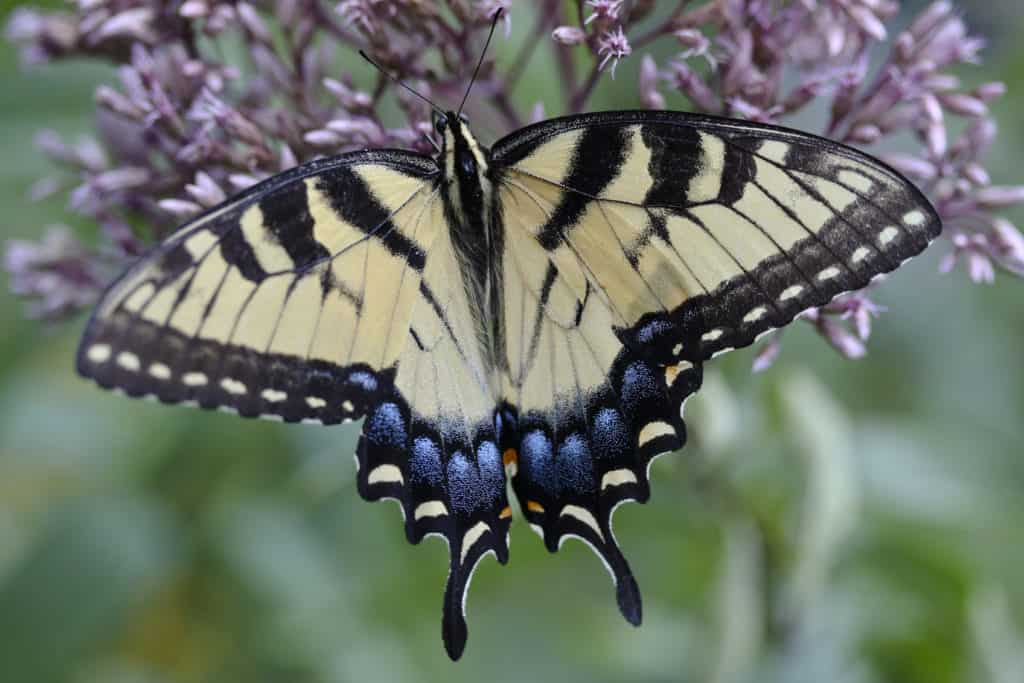Creature Feature

Butterfly Season
By Wayne Bierbaum
I was quite impressed by the numbers and varieties of flying insects at Jug Bay’s butterfly garden when I visited today. I counted well over 10 butterfly species. There were three different swallowtails alone, not to mention the multiple types of skippers, fritillaries, hairstreaks, azures, checkerspots, sulfurs and monarchs. There were also several different types of bees and wasps.
The end of the summer brings on a rush of activity as animals get ready for fall and winter. The butterfly population seems to explode in August and September. The more individuals that are present at the end of summer the more likely they will have members survive the winter.
Some butterflies build their population for a southerly migration, this includes the monarchs, admirals, buckeyes and painted ladies. Monarchs fly all the way to a certain region in Mexico for the winter. The other migratory butterflies tend to follow along the Gulf of Mexico and may also end up in Mexico but not in a specific area like the monarch.
Other butterflies hibernate as an adult. The comma, question mark and mourning cloak are butterflies that nestle in somewhere like the crevice of loose tree bark for the winter. Because they hibernate as an adult, they are the first butterflies to be seen in the spring or a warm late winter day.
Many other species hibernate as a caterpillar. These include checkerspot, blue, copper, viceroy and fritillary butterflies. The caterpillars will burrow into the ground or under leaf litter usually near a host plant. Other butterflies hibernate as a pupa which is the stage of their life between caterpillar and butterfly. Swallowtail and skipper caterpillars burrow under leaves to mature into an overwintering pupa. Almost all the moth species overwinter as pupa.
To help the butterflies and moths overwinter, let leaves lay or rake them into a garden bed, plant late blooming flowers and leave flower gardens untouched over the winter. Bees and small butterflies can use the open hollow broken stems to spend the winter.
Of course, avoid using insecticides, especially around flowering plants.
For help with making a pollinator friendly yard, the Maryland Department of Natural Resources has a helpful webpage called What’s the Buzz About Pollinators.
In my yard, I have planted swamp milkweed and common milkweed for the monarchs, Joe Pye weed and purple-stemmed aster for late season food, and pawpaw trees as host plants for zebra swallowtails.
Drop by Jug Bay’s butterfly garden as the number of species of butterflies this year is remarkable.
